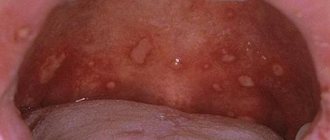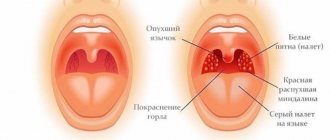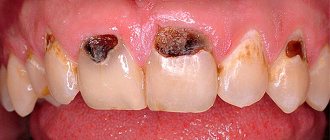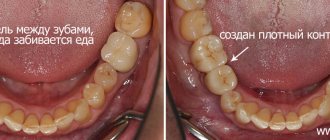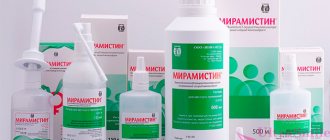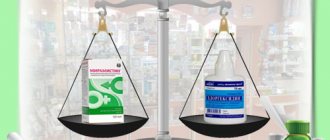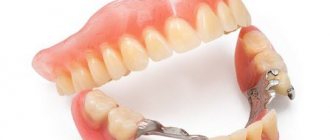Chamomile as an additional aid in the treatment of oral diseases
There are probably very few people who have never tried rinsing their mouth with chamomile. It is not surprising, because this medicinal culture has healing properties. It is suitable not only for gargling and gargling, but can be drunk to normalize the functioning of the gastrointestinal tract. In addition, decoctions and products based on it are not addictive and are safe to swallow even by small children.
The decoction is used in the treatment of various problems
From the medicinal culture, you can make decoctions-rinses for daily treatment of the oral cavity after brushing your teeth. This will be an excellent preventive measure against dental diseases. If you have problems with teeth and gums, then the use of chamomile flowers will also be useful. However, it is important to understand that recipes based on this plant, like any other folk remedies, should only be additional or auxiliary to the main treatment prescribed by the doctor.
Buy chamomile only at the pharmacy and give up the idea of collecting flowers in the garden, flower beds or meadows. The fact is that other types of plants are often confused with medicinal flowers - nivjak, navel, chamomile. Externally, their flowers are very similar, but there is absolutely no benefit from using them.
Let's look at what problems chamomile will help you cope with more quickly if you use it in the complex treatment of certain oral diseases.
Choosing a gum rinse
Mouthwashes can be therapeutic, that is, intended for the treatment of specific diseases, and prophylactic, which are recommended by dentists as an additional means of caring for the oral cavity. It is better to select the first ones under the supervision of a doctor, taking into account the individual characteristics of the course of the disease. The latter can be divided into 4 types:
- for the prevention of caries;
- for teeth whitening;
- for gum treatment;
- for comprehensive protection of gums and teeth.
When choosing a mouthwash for each specific purpose, give preference to well-known manufacturers and carefully read the instructions for use. Startsmile recommends.
- CURASEPT ADS 205. Gum rinse contains fluorides and vitamin C. Protects against caries and is not addictive. Recommended for comprehensive care of braces and dentures.
- 4-action Mouthwash. Biorepair offers the ideal rinse option for teeth and gums that are hypersensitive. The rinse restores enamel and prevents caries.
- Paroguard CHX Miradent. Has a pronounced anti-inflammatory effect. Contains chamomile extract. Does not require dilution with water, which makes it convenient for travel or business trips.
- PresiDENT Profi. Therapeutic solution for rinsing gums based on Chlorhexidine. Does not contain ethanol. Suitable for irrigator. Recommended as a rinse for gum periodontal disease.
- "Prevention of gum disease" Donfeel. Can be used for daily care. Removes plaque, has a bactericidal effect and promotes mucosal regeneration.
ATTENTION!
Exceeding the concentration of ethanol in the mouthwash provokes dryness of the oral mucosa!
Bad breath, or halitosis
The smell is caused by bacteria, and chamomile has a powerful antiseptic effect due to the substance camazulene it contains. It fights various pathogens, in addition, it not only suppresses the growth of pathogenic microorganisms, but also restores the natural balance of microflora - eliminates dysbiosis.
Recipes for halitosis
- with mint: to prepare a decoction, you need to mix 1 tablespoon of mint and chamomile and add 500 ml of boiled water to the mixture. Pour boiling water over the ingredients and strain after an hour.
- with strawberry leaves: mix the ingredients in equal quantities (for example, one tablespoon of both), add boiling water. The decoction should be placed in a dark, warm place, left for about half an hour, strained and cooled.
The decoction helps get rid of bad breath.
How to rinse your mouth with chamomile: use any of the prepared decoctions in the morning and evening as a rinse after brushing your teeth. Just take a little liquid into your mouth, carefully move it from side to side for 1-3 minutes, and spit it out. Do not eat or drink for the next half hour to ensure maximum benefit from the product.
Do not boil chamomile flowers over an open fire. It’s better to simply pour boiling water over them (or simmer in a water bath for about 20–30 minutes) and let them brew, so they will retain maximum beneficial properties.
What are the benefits of chamomile?
The queen of medicinal plants belongs to the Asteraceae, or Asteraceae, family. The genus “chamomile” includes at least 20 species of low herbs that have a strong but pleasant aroma and bloom in the first year of life.
The action of chamomile has a beneficial effect on the health of the entire body, and the medicinal effect is explained by the high content of essential oil in the inflorescences. To obtain maximum benefits, it is important to properly prepare and store plant materials.
Toothache
The medicinal culture contains organic valeric acid and analgesic compounds, so it does a good job of reducing the sensitivity of nerve endings and can cope with pain of mild to moderate intensity. It is thanks to its anesthetic properties that many people like to rinse their mouths and throats with chamomile when the first signs of acute respiratory infections or acute respiratory viral infections, as well as toothache, appear.
Due to its positive properties and lack of harm, folk recipes with chamomile are popular among nursing and pregnant women in a situation where many analgesics are simply contraindicated due to the potential danger.
The likelihood of an allergic reaction to pharmaceutical chamomile is practically excluded. However, not everyone knows that it is not recommended to take it orally or drink it as tea for women in early pregnancy, as it produces estrogen hormones, which leads to uterine tone and can cause miscarriage. Also, teas and decoctions should not be consumed internally by people with anacid gastritis (with zero stomach acidity).
Strong decoction against toothache
You will need 300 ml of boiled water per 5 spoons of medicinal flowers. Before use, it is recommended to leave the resulting composition for about 30 minutes and cool to room temperature.
How to use: you need to take a little liquid into your mouth and hold it for as long as possible. You should not rinse your mouth with a cold or hot decoction, as you may get the opposite effect of what was expected, namely, cause a new attack of pain.
The product can cope with toothache
To enhance the effect, you can add a few tablespoons of dried sage or echinacea to the mixture. A compress of chamomile oil will also help relieve toothache. Just apply a few drops of prepared oil (sold in pharmacies) to cotton wool and apply to the sore tooth. Before doing this, make sure that you are not allergic to other components of the composition.
“My grandmother told me how to brew chamomile to gargle and gargle. These days it’s even easier to do this because it’s sold in filter bags, and all you have to do is pour boiling water over it. I use it myself on occasion and give it to my children for almost all their troubles. I believe that this is a natural and completely harmless product, the benefits of which have been proven by more than one generation. And it costs less than fancy medicines that cure one thing and cripple another.”
Maria Fadeeva, review from 32top.ru
Difficult teething
Chamomile tea and compresses are recommended to be given to young children to alleviate the condition of difficult teething. These products are natural, hypoallergenic, relieve itching, skin irritation and pain and are as safe as possible for the body. Chamomile is an essential component of many gels to relieve teething symptoms: Chicco, Kamistad Baby, Baby Doctor, Dentinox, Parsonal1.
Adults whose wisdom teeth have begun to emerge can also make a decoction or compress. In this case, you will get a “2 in 1” effect - numb the gums and disinfect tissues damaged as a result of teething.
Chamomile will relieve itching and irritation during teething
Gum inflammation
Chamomile is rich in natural antioxidants that have antifungal and antiviral properties. It contains ascorbic (vitamin C) and nicotinic (vitamin PP) acids, as well as oils that have an anti-inflammatory and immunostimulating effect. If you rinse your mouth with chamomile, you can relieve itching and swelling of the gums, reduce their bleeding and reduce sensitivity. It will help strengthen and tone the mucous membrane, strengthen local immunity and increase tissue resistance to adverse factors.
The decoction is used to treat gum inflammation
Decoctions, lotions and applications from these medicinal raw materials are used2 in the complex treatment of diseases such as chronic catarrhal gingivitis, periodontitis and periodontal disease. To enhance the effect, chamomile is usually mixed with calamus or calendula, as well as other medicinal plants (sage, oak bark, eucalyptus).
How to rinse your mouth with chamomile for gum inflammation? It is recommended to use only fresh (one day old) and warm decoction. The procedure should be carried out after each meal, as well as after morning and evening brushing of teeth. The course of treatment is 3 weeks.
Diseases of teeth and gums
Treatment strategy for gingivitis
How is gum inflammation treated? The pathogenesis is based on the inflammatory process, which means that it is necessary to include medications with anti-inflammatory activity in treatment regimens. The etiology, or cause of the disease, may be associated with the activation of pathogenic microorganisms, and therefore it is advisable to use antimicrobial agents.
Of all the symptoms, pain is the most uncomfortable; To reduce discomfort, pastes or gels with adhesive and analgesic properties should be used. They not only relieve pain, but also protect the mucous membrane from the negative effects of food and drinks and accelerate regeneration.
Solutions, infusions and decoctions for rinsing
One of the main methods of treating gingivitis is rinsing. If you have gum inflammation, you can rinse your mouth with pharmaceutical or folk remedies - decoctions and infusions of medicinal herbs prepared at home.
Pharmacy medications for rinsing
Chlorophyllipt.
Plant-based pharmaceutical rinse. Chlorophyllipt has a pronounced antibacterial effect and is effective against a wide range of microorganisms. It is produced in the form of a concentrated green alcohol solution with a pine smell, which requires dilution. To cure inflammation of the gums near the tooth, add one or two tablespoons (or one or two caps) of chlorophyllipt to 100 ml of warm water. You should rinse your mouth with chlorophyllipt several times a day.
Chlorhexidine bigluconate.
A time-tested disinfectant that has a detrimental effect on many pathogenic microorganisms. Widely used in dental practice. Available in the form of a solution with a concentration of 0.05%, 0.1% and 0.2%. You can rinse your mouth with a 0.05% solution of chlorhexidine bigluconate without prior dilution. It is advisable to dilute more concentrated solutions with warm water in a ratio of 1:2 or 1:4.
Miramistin.
An antiseptic that is actively used to prevent and treat infections of the skin and mucous membranes. When treating gum inflammation, a 0.05% solution of miramistin is used, which does not require prior dilution. You should rinse your mouth or irrigate the inflamed area with an antimicrobial agent several times a day, at intervals of 2-3 hours.
Furacilin.
Furacilin solution is one of the most effective and popular antibacterial agents. It is still actively used in surgical practice; furatsilin is also used in the treatment of dental pathologies. Available in tablets. Before rinsing, you need to dilute 1 tablet of furatsilin in 100 ml of water.
Hydrogen peroxide
- a universal remedy with powerful antimicrobial potential, which is used both in surgery and at home. In dentistry, hydrogen peroxide is used for many diseases of the oral cavity. For gingivitis, it is recommended to rinse your mouth with a 3% peroxide solution. You can also apply cotton swabs soaked in an antibacterial agent to the inflamed mucosa.
Rotokan.
Those who prefer traditional herbal-based products can rinse their mouth with Rotokan solution. The natural preparation contains a combination of yarrow, calendula and chamomile extracts. Before use, it requires dilution: add about one teaspoon of Rotokan solution to a glass of warm water.
Traditional medicine
Substances of plant origin are included in many pharmaceutical rinses, but healing solutions can be prepared independently, at home.
To do this, you just need to purchase the necessary ingredients and mix them in the correct proportions. You should choose herbs that promote the reverse development of inflammation, reduce pain, suppress the activity of microbes and accelerate regenerative processes. For inflammation of the gums, the following folk remedies have a good effect:
- Calendula;
- Oak bark;
- Chamomile;
- Oregano;
- Yarrow;
- St. John's wort;
- Sage;
- And others.
To brew a calendula infusion, just take one tablespoon of the plant’s flowers and pour 200 ml of boiling water over it.
Let it brew for 1-2 hours, then use the infusion for rinsing without additional dilution. To prepare chamomile infusion you will need 2 tbsp. l. plant flowers. Next, everything is standard - pour 200 ml of boiling water, let it brew and use it for rinsing or mouth baths. Preparing a healing remedy from yarrow is a little more difficult. Boil two tablespoons of plant flowers for 15 minutes. Then the broth is filtered and allowed to cool to a temperature of 38-40 degrees. You need to rinse your mouth with yarrow decoction several times a day. A decoction of oak bark is prepared in the same way, but the heat treatment time in this situation increases to 30 minutes. It’s easier to make a healing infusion of sage at home - just pour 200 ml of boiling water over a tablespoon of inflorescences. The solution is infused for about an hour, after which it can be used for mouth baths or rinsing. You can also use other medicinal herbs for rinsing: plantain, mint, agave, linden, St. John's wort or oregano. All mouthwashes, both pharmaceutical and homemade from medicinal herbs, must be used regularly. Rinse your mouth after each meal, especially carefully on the affected side. This will help clear the mucous membrane of food particles, which can be irritating, increase the inflammatory process and inhibit the regeneration of the epithelium. After rinsing, you can additionally treat the inflamed area with ointment or gel; Pharmacy pastes for topical use are discussed in the next section of the publication.
Local remedies: pastes, ointments and gels
Rinsing allows you to quickly and efficiently clean the oral cavity, but the effect of medicinal substances from solutions is limited in time.
In order for the healing process to proceed continuously, after rinsing it is necessary to treat the inflamed mucous membrane with a special adhesive film-forming agent - ointment, paste or gel. Dental pastes create a thin but durable film on the surface of the mucosa, which serves as a barrier layer. This barrier protects the damaged area from the unwanted effects of external factors - chemical components of food and drinks, tobacco smoke, food particles. Aggressive environmental factors irritate the mucous membrane and can provoke repeated damage to the painful area, which not only increases pain, but also inhibits the processes of regeneration and self-healing. With gingivitis, it is extremely important to prevent the negative impact of external factors on epithelial tissue. For this purpose, it is necessary to use dental ointments, balms or gels. In addition to the protective function, many pastes have anti-inflammatory, antibacterial, analgesic and wound-healing effects. They reduce swelling and redness, relieve discomfort (reduce itching, pain and burning), and accelerate regenerative processes.
Metrogil Denta
. Dental gel with a powerful antibacterial effect. Metrogyl Denta contains two substances with antimicrobial activity - metronidazole and chlorhexidine. Apply to the mucous membrane 2 times a day with a cotton swab or finger, after thoroughly cleansing the oral cavity. After applying the product, it is advisable not to drink or eat for at least half an hour.
Solcoseryl Denta.
Dental paste with a wound-healing effect, which is actively used to treat gum and periodontal diseases. Apply with a finger or a cotton swab to previously cleaned and dried mucous membranes. There is no need to rub in Solcoseryl Dent; just spread it over the surface in an even layer. You need to treat the affected area 2 or 3 times a day. Solcoseryl Denta paste does not have antimicrobial activity.
Holisal Dental.
Dental gel with anti-inflammatory and analgesic properties. Contains natural ingredients that reduce pain and relieve inflammation. Does not have antimicrobial activity. Holisal Dental should be applied 2-3 times a day. You can use this product both before and after meals to create a protective layer on the damaged area and reduce discomfort during meals.
Asepta.
Dental gel developed specifically for the treatment of inflammatory diseases of the gums and periodontium. Contains propolis extract, has anti-inflammatory and antimicrobial effects. Reduces discomfort (itching, burning, pain). Accelerates epithelial regeneration. Asepta is applied to the cleansed mucous membrane of the inflamed area 2-3 times a day. It is advisable not to drink or eat for half an hour after applying Asepta gel.
Medicinal toothpastes
Even if you regularly brush your teeth with expensive, high-quality toothpaste, gingivitis requires a special approach. Whitening compounds are not suitable - it is necessary to brush your teeth with medicinal pastes, which are developed taking into account the requirements for the treatment of this disease. Lakalut Active
has a good effect .
"President Active"
- another toothpaste that helps relieve inflammatory processes and suppresses the activity of pathogenic microorganisms. It is recommended to brush your teeth with this paste for 2-3 weeks, until the integrity of the epithelium is completely restored. As an alternative to the pastes mentioned above, you can use Parodontax, which contains plant extracts with anti-inflammatory effects.
Gingivitis and antibiotics
Do I need to take antibiotics for gum disease?
On the one hand, the cause of gingivitis may be the activation of pathogenic or opportunistic flora, and therefore the decision in favor of antibiotics seems justified. In fact, topical antiseptics, which were discussed in previous sections of the publication, are sufficient to suppress pathogens. Systemic antibiotics are rarely used for gingivitis, and only as prescribed by a dentist. You cannot take antibacterial drugs on your own. This can lead to disruption of the normal biocenosis of the oral cavity and the entire digestive system. Dysbacteriosis negatively affects regenerative processes and promotes the activation of pathogenic organisms, in particular fungi of the genus Candida, which can lead to the development of candidal stomatitis. Make an appointment
Damage to the mucosa
If you have wounds in your mouth caused by rubbing from braces or dentures, then chamomile, which can be used as a mouth rinse, will help ease the condition and quickly restore damaged tissue. Medicinal decoctions will also be effective in treating rashes caused by fungal stomatitis and candidiasis, but, of course, only in combination with other measures.
Medicinal flowers accelerate the regeneration of cells and tissues, help in the fight against cracks in the tongue and other damage to the mucous membrane. If you rinse, you also reduce the risk of infection.
If the mucous membrane is damaged, rinsing with a decoction also helps.
Chamomile oral baths are recommended for those who have undergone surgery on the oral tissues or have had teeth removed. This measure helps to heal faster the areas where surgery was performed. After tooth extraction, this also becomes a prevention of alveolitis. How to do it: just take the decoction into your mouth, hold it for 2-3 minutes (avoid vigorous rinsing), and carefully spit it out. After surgical interventions, oral baths can only be started on the 2nd day.
ENT diseases
Due to its anti-inflammatory, analgesic and antiseptic properties, the medicinal decoction is used to rinse the mouth and throat for tonsillitis, laryngitis, lymphadenitis and sialadenitis (salithiasis).
If you use decoctions of this medicinal culture to treat diseases of the mouth and throat, then never use them hot. It is better that the liquid is warm or at room temperature, because otherwise you can burn the mucous membranes. You should not swallow the decoction, otherwise you can push bacteria into the body and cause complications.
Notice
: Undefined variable: post_id in
/home/c/ch75405/public_html/wp-content/themes/UltraSmile/single-item.php
on line
45 Notice
: Undefined variable: full in
/home/c/ch75405/public_html/wp-content /themes/UltraSmile/single-item.php
on line
46
Rate this article:
( 6 ratings, average: 5.00 out of 5)
prevention
- Goreva E.A., Petrenko A.V., Babailov M.S. The use of herbal preparations for teething syndrome in children // Medical and pharmaceutical journal “Pulse”. – 2021.
- Goncharova E.I. Herbal remedies in the prevention and treatment of periodontal diseases // Russian Dental Journal. – 2012.
Expert “Chamomile is an excellent natural antiseptic. For a while, it can help alleviate the condition of various dental diseases, as it relieves unpleasant symptoms well. However, it will not eliminate the root cause of the problem. Therefore, seeing a doctor is a must!” Dentist-therapist Elena Vladimirovna Orlova
Consulting specialist
Orlova Elena Vladimirovna
Doctor rating: 9.5 out of 10 (2) Specialization: Dentist-therapist Experience: 32 years
Comments
Doesn't chamomile whiten teeth by any chance?
Polina (05.14.2020 at 20:40) Reply to comment
- Dear Polina, chamomile does not whiten the enamel, and if you abuse a highly concentrated chamomile decoction or constantly drink strong tea from this medicinal plant, then, on the contrary, you risk staining the enamel with a yellowish tint.
Editorial staff of the portal UltraSmile.ru (05/20/2020 at 09:18) Reply to comment
Can I rinse with chamomile after tooth extraction or not? I had my wisdom tooth removed, and the doctor told me not to rinse with anything. And my mother says you need to rinse it, so the wound from removal will heal faster.
Love (05/20/2020 at 08:38) Reply to comment
I know that chamomile is good for inflammation and gastritis, but I didn’t know that it should be used to rinse the mouth for dental problems. Tell me, if you have bleeding gums, how many times a day should you rinse your mouth to achieve results?
Olga (05/20/2020 at 08:48) Reply to comment
Chamomile is a wonderful natural antiseptic. But, with its frequent use, namely with daily rinsing of the mouth with a decoction, can the enamel begin to acquire a yellow tint?
Nadezhda Ivanova (05/20/2020 at 09:16) Reply to comment
Hello? Tell me, can something more readily available help with bad breath? I don't have mint or strawberry leaves in my house. Maybe something more readily available can be used? Chamomile or something else.. Thanks in advance for your feedback!
Anna (05/20/2020 at 09:22) Reply to comment
Is it possible to rinse your mouth with chamomile decoction for an abscess in the right cheek area after drainage and removal of the fifteenth tooth? The attending physician did not prescribe rinsing, only bandages and antibiotics.
Sofia (05/20/2020 at 09:28) Reply to comment
The child is 6 months old. Teeth are cutting through. Naturally, rinsing is impossible, since the solution is constantly swallowed. Is it possible to drink chamomile at such an early age? Could there be any side effects?
Julia (05/20/2020 at 09:34) Reply to comment
As I understand it, chamomile acts as an additional adjuvant and should be used in complex treatment? Or are there cases in which just using chamomile is enough?
Tatyana (05/20/2020 at 09:43) Reply to comment
I always thought that chamomile prepared by hand is the best, but it turns out it’s not so simple - you need to have a good understanding of plants before you start collecting them. Which pharmacy chamomile is better to take - in bags or in bulk?
Alla (06/22/2020 at 07:23) Reply to comment
I rinsed my mouth with chamomile decoction for a week. After each use, an unpleasant sensation in the mouth, as if the top layer of the teeth and gums had been wiped off with soda. Is this how it should be or is this procedure not suitable for me?
Darina (06.22.2020 at 14:42) Reply to comment
I noticed that lately my gums have been inflamed and bleeding. Please tell me what if I start rinsing my teeth with chamomile. Will chamomile infusion help get rid of inflammation?
Julia (06/22/2020 at 15:43) Reply to comment
Tell me, please, I heard that for gastritis and high acidity it is not recommended to “use” chamomile. Is this true or are there no restrictions? Thank you!
Christina (06.22.2020 at 18:48) Reply to comment
Write your comment Cancel reply
Collection and storage rules
You can collect grass at any time of the year, but the inflorescences are considered the most useful. If they are harvested at the beginning of summer (mid-June), the herbal mixture will delight you with a high concentration of essential oils and medicinal substances.
A characteristic feature of chamomile is a yellow pad in the center, framed by a corolla of white petals.
How to prepare a medicinal plant yourself:
- Only the heads of inflorescences are collected;
- for drying, lay out in one layer;
- dried without heating the herbal mass, but in a draft.
An important condition for proper drying is that the plant must retain its aroma and slight bitter taste, and not change color and structure.
